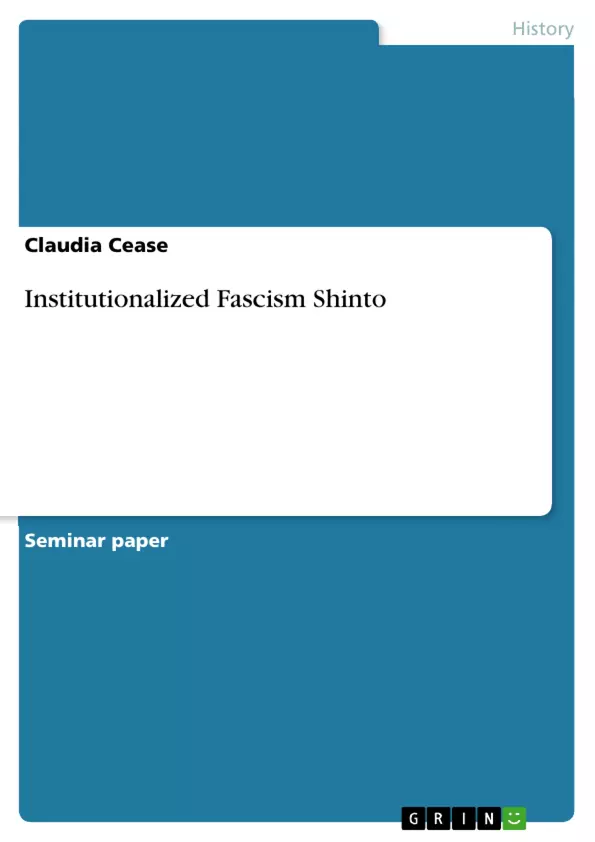(...) In theory, it was a decent compromise between a king and his subjects. But practice showed a much different picture. As much as Japan was acquainted to stratification of the people it is surprising that this did not reflect in its constitution: Nobody was responsible. The emperor was by default infallible, therefore could not be held responsible; in theory it was the government by countersignature, but in reality, nobody could be held there responsible either as nobody had any official authority. It would soon unravel into a convoluted political intrigue and even assassinations. Moreover, the constitution didn’t account for the most important factor of all concepts to regulate humanity: human character itself. But for now, the revolutionists of the Meiji restoration were able to master the balancing act between spiritual commitment and worldly necessity.
Inhaltsverzeichnis (Table of Contents)
- Shintō Ideology in the 20th Century
- The Meiji Revolution
- The Emperor's Divine Right
- State Shintō
Zielsetzung und Themenschwerpunkte (Objectives and Key Themes)
This text explores the development and significance of Shintō ideology in 20th century Japan, particularly examining its role in the Meiji Restoration and the subsequent rise of Japanese nationalism.
- The evolution of Shintō beliefs and practices over time
- The intersection of Shintō and Japanese political and social structures
- The role of Shintō in shaping national identity and ideology
- The impact of Shintō on the development of Japanese nationalism and militarism
- The relationship between Shintō and the concept of the emperor's divine right
Zusammenfassung der Kapitel (Chapter Summaries)
The first chapter provides a brief overview of Shintō, outlining its origins, central beliefs, and practices. It also examines the influence of Buddhism and Confucian thought on Shintō, noting the development of a "pure" form of Shintō in the 18th century.
The second chapter focuses on the Meiji Restoration, discussing its political and social reforms. It highlights the role of Shintō in shaping the new Japanese identity and its relationship to the imperial system.
The third chapter delves into the concept of the emperor's divine right, tracing its development and analyzing its significance in the context of Japanese political and social thought. The chapter also explores the relationship between the emperor, the people, and the Shintō belief system.
Schlüsselwörter (Keywords)
This text focuses on key themes such as Shintō ideology, the Meiji Restoration, Japanese nationalism, the emperor's divine right, state Shintō, and the intersection of religion and politics in 20th century Japan.
- Quote paper
- Claudia Cease (Author), 2012, Institutionalized Fascism Shinto, Munich, GRIN Verlag, https://www.hausarbeiten.de/document/263606


